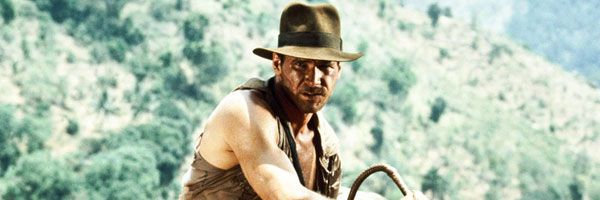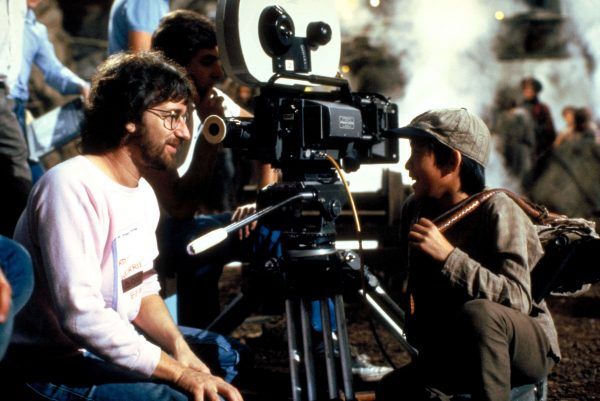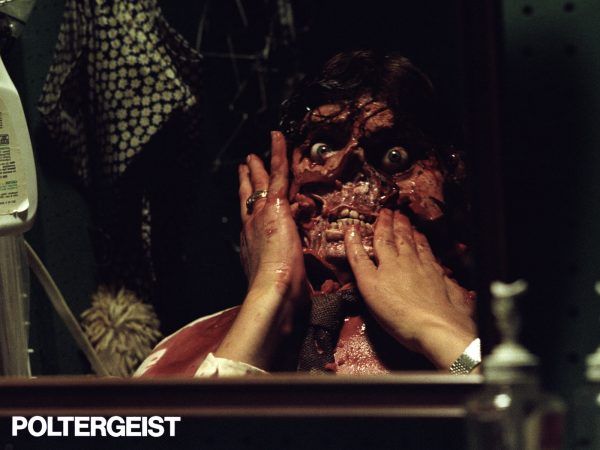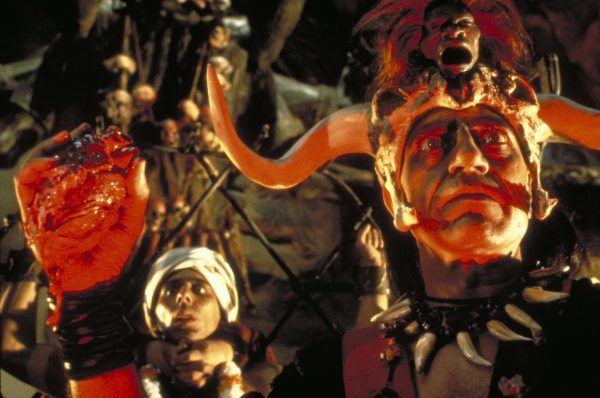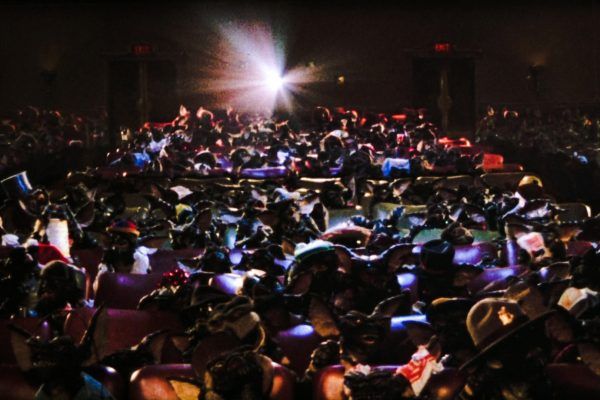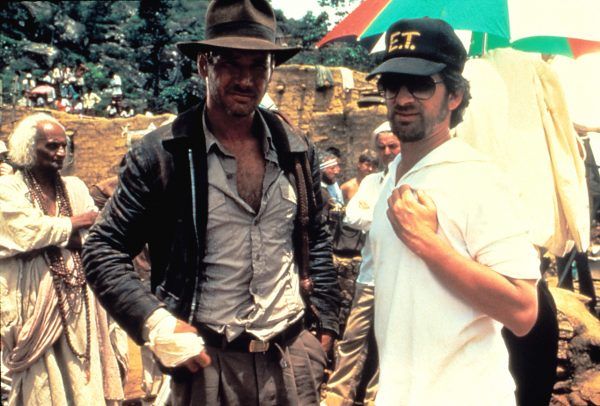There’s a reason every blockbuster movie looks the same nowadays, and that reason is a tiny plastic Harrison Ford doll. Well, most of the reason. And the doll actually doesn’t look much like Harrison Ford at all. It looks more like Robert Forster at a Halloween party (rest in paradise).
The doll in question is an Indiana Jones action figure, one of three created as part of the tie-in merchandising juggernaut that was Indiana Jones and the Temple of Doom. “Directed by Steven Spielberg and produced by Geroge Lucas” is a phrase that essentially meant “guaranteed joy prepared by the wardens of the cosmos” when Temple of Doom was released back in 1984 - Lucas had just wrapped up the original Star Wars trilogy, and Spielberg was a bonafide hit machine thanks to a decade of blockbusters like Jaws, E.T. the Extraterrestrial, and Raiders of the Lost Ark, the original Indiana Jones adventure. Basically, anything these two men touched was pretty much guaranteed to make all of the money in the goddamned world, and having a kingly array of products emblazoned with Harrison Ford’s grizzled face was a huge part of the equation. Indeed, it is a strategy that has worked for several Star Wars films, although curiously no action figures were ever made for Air Force One.
But Spielberg was in a bit of a pickle. Back then, the only ratings for films were G, PG, R, and X (later NC-17), and Spielberg had been playing pretty fast and loose with what you can get away with in a PG-rated film. Jaws features a scene wherein a titanic vampire fish bites Robert Shaw’s midsection so hard he vomits blood, which suggests that the same force is probably forcing a mountain of shit out of his asshole like a Gogurt stick. He’s absolutely shitting in that shark’s mouth as he dies. And that movie is rated PG.
The Spielberg-produced (and, according to substantial rumors, probably also directed) Poltergeist is loaded with body horror phantasms and a man peeling his own face like a tangerine. That film initially got tagged with a well-deserved R rating, but Spielberg and director Tobe Hooper appealed and somehow convinced the MPAA to give them a much more lucrative PG rating. See, if it’s rated R, kids can’t buy tickets to see it, and Spielberg didn’t want to deny America’s children from seeing a man claw his face to shreds like Gary Oldman in Hannibal.
And the Indiana Jones series is no stranger to sudden disturbing outbursts of unexpected violence. In Raiders, a man dressed like the Pope gets his skull detonated by angry ghosts mere feet away from a pair of Nazis whose flesh melts into goo like time-lapse footage of an ice cream cone in an unforgettable triple homicide literally committed by God. Once again, Parental Guidance was suggested.
If you remember anything about Indiana Jones and the Temple of Doom, more popularly known as “The Worst Indiana Jones Film Until 2008 Happened,” it’s either the scene in which our heroes eat bugs and live snakes cut from the belly of a dead python, or the scene in which a man dressed for a relaxing trip to a day spa gets his heart torn out of his chest and lowered into a pit of lava, shrieking all the way down until he finally bursts into flames. Spielberg and Lucas, and their respective studio and business partners, were expecting to roll home gigantic barrels of extreme wealth generated by the success of the hotly-anticipated sequel, and much of that wealth was going to be in the form of kid-centric merchandise like the aforementioned Harrison Forster action figure, breakfast cereals, video games, and so on. But the director was facing backlash over marketing such a violent film to children, and in fairness, “scaring the shit out of children” was the kind of jam early-career Spielberg could tap his toes to. Just two weeks after Temple of Doom premiered in theaters, Joe Dante’s Gremlins was released. Another Spielberg-produced film hiding intense violence behind kid-friendly marketing and a PG-rating, Gremlins coming so close on the heels of Temple of Doom in the summer blockbuster season of 1984 was enough for people to finally object en masse.
But resubmitting those movies for a more honest R rating would’ve dealt a substantial blow to their respective revenue streams, particularly a mega-hit like Indiana Jones. For you see, kids won’t be asking for toys and games based on a movie they aren’t allowed to watch. So Spielberg flexed the shit out of his glowing E.T. muscles and walked into then-President of the MPAA Jack Valenti’s office (I’m doing some dramatic imagining here, this all might have transpired via a series of phone calls or messages relayed via assistants) and said, “Hey, what if there was a rating that was somewhere between PG and R? Something family-friendly but dangerous, like PG with a leather jacket and an earring?”
Valenti, a one-time advisor to President Lyndon B. Johnson (you can actually see Valenti in the famous photo of Johnson being sworn in after the Kennedy assassination), was a personal friend of Lew Wasserman, the head of MCA/Universal. Wasserman was largely responsible for having Valenti placed in charge, and as it happens, was also running Universal Studios when Spielberg made Universal boatloads of money with Jaws and E.T., movies that each briefly became the biggest box office hits of all time. And Spielberg, on top of being Universal’s wunderkind under Wasserman’s watch, was also friends with Valenti. See, in Hollywood, it’s not what you know but who you know, and how many million-dollar rubber monster movies you made for them and their pals.
As luck would have it, Valenti was totally open to creating a new intermediary rating between PG and R that would allow Spielberg to continue terrifying children while still selling them licensed lunch boxes. That rating was PG-13, officially introduced on July 1, 1984, just a month and change on the heels of Temple of Doom and a few weeks after Gremlins. Neither of those films were re-rated while still in theaters, but subsequent home video releases of both have been tagged with the PG-13 they helped create. (Fun fact: the first theatrical release to carry the brand-new PG-13 rating was Red Dawn, a film which boldly asked the question “What if Sixteen Candles, but machine guns?”)
So why is little plastic Indy to blame for the same-ness plaguing movie theaters for the past few decades? To answer that question, let’s take a look at a list of the current biggest box office hits of all time. At the time of this writing, 66 of the top 100 worldwide earners were rated PG-13. Of the top ten biggest films ever made, 9 are PG-13. And of the 43 films that have broken $1 billion dollars, 33 carried that check-cashing PG-13 rating.
Sure, movies were big hits before. But it wasn’t until the creation of the PG-13 rating that they started raking in over a billion freaking dollars at the box office. PG-13 gets to appeal to both kids and adults without alienating either demographic. Plus, if a movie is PG-13, you can sell all the action figures, fruit snacks, Happy Meal toys, and video games you want, and nobody will cry foul. PG-13 is like hiring a babysitter with a Kanji tattoo and a Sprite can full of Bartles & Jaymes. The kids will get to bed on time, but they’re going to see some shit, and maybe hear an F-bomb or two.
So, if you’re feeling burned out on the seemingly-endless parade of color-desaturated action-adventure films featuring superheroes, giant robots, and/or dinosaurs trading stepdad-on-a-family-trip jokes in between scenes of consequence-free violence, you have Steven Spielberg and his mighty need to sell Indiana Jones action figures to thank.

